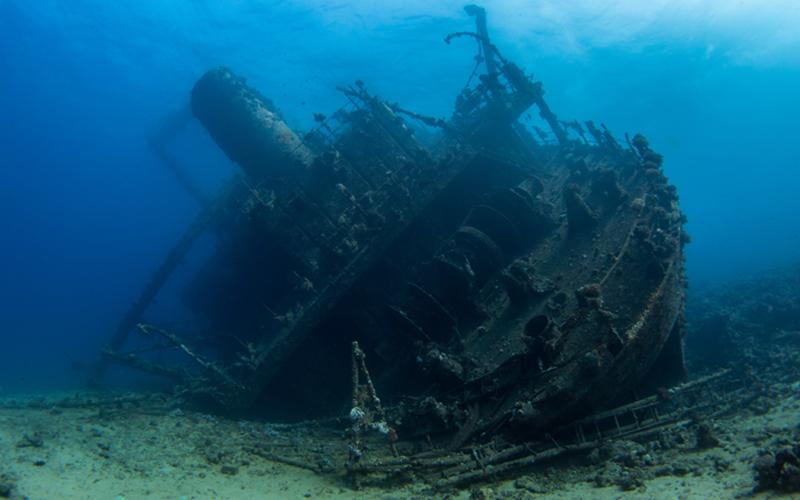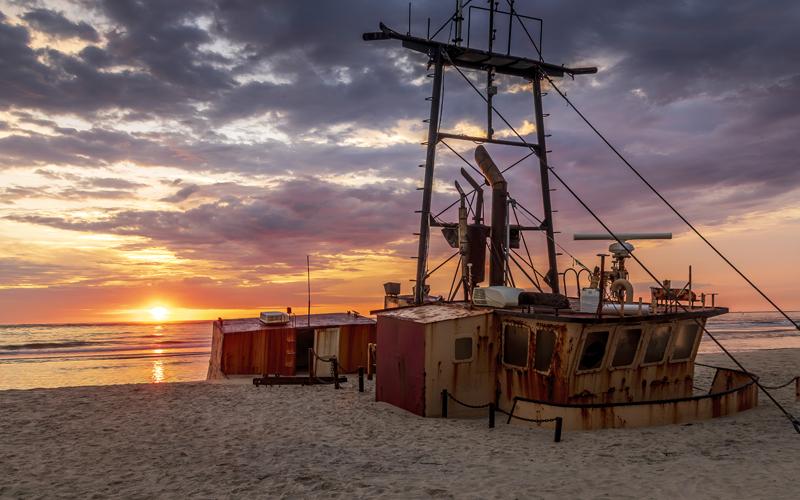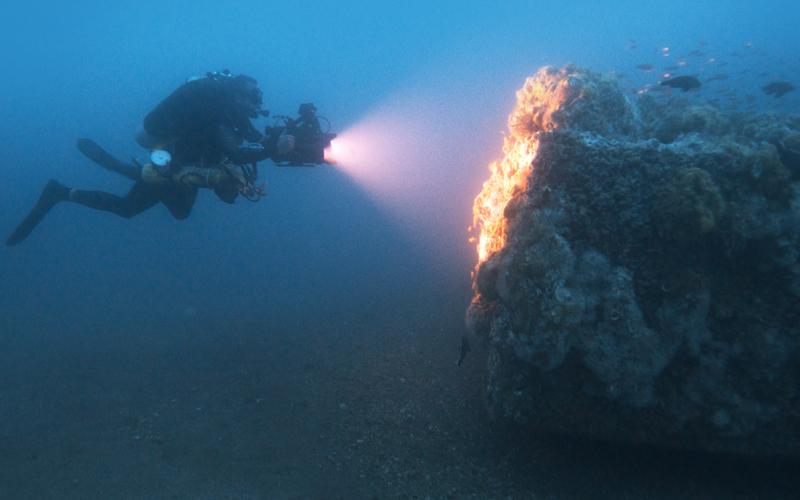The Graveyard of the Atlantic is a captivating and mysterious underwater world located off the coast of North Carolina. For centuries, this treacherous stretch of ocean has claimed numerous ships and lives, earning its haunting nickname. Its shipwrecks offer a tantalizing glimpse into the past, revealing stories of adventure, tragedy, and heroism. As we continue to explore and preserve this underwater graveyard, we must also recognize the delicate balance between historical conservation and ecological protection. By honoring the legacy of the fallen vessels and their crews, we ensure that the Graveyard of the Atlantic remains a mesmerizing destination for future generations to explore and learn from.
What is the Graveyard of the Atlantic?
The "Graveyard of the Atlantic" refers to a region just off the East Coast of the United States, notably around the Outer Banks of North Carolina and Virginia. It's known for its treacherous conditions and is infamous for being the site of numerous shipwrecks over centuries.
The term primarily reflects the combination of factors that made this region particularly hazardous for maritime activities. The confluence of the Labrador Current from the north and the Gulf Stream from the south leads to unpredictable and rapidly changing weather conditions. This, along with shallow sandbars stretching out into the sea (known as the Outer Banks), has made navigation especially tricky.
The frequency of shipwrecks in this region has created a rich trove of underwater archaeological sites and has fostered a culture of folklore and history surrounding these wrecks. The Graveyard of the Atlantic Museum in Hatteras, North Carolina, for instance, is dedicated to the preservation and presentation of this maritime heritage. The area is also popular for recreational diving and exploration.
Where is the Graveyard of the Atlantic located?
The "Graveyard of the Atlantic" is located off the East Coast of the United States, particularly along the Outer Banks of North Carolina, though it also extends to the coast of Virginia. The Outer Banks are a series of barrier islands stretching over 200 miles.

Why Have So Many Ships Wrecked in the Graveyard of the Atlantic?
It is believed that the geography of the Outer Banks coast may have played a large part in why so many ships wrecked here. The Outer Banks is a collection of barrier islands that stick out into the Atlantic ocean. If you view them on a map, you can easily see why hurricane season is a topic of concern every year. The mainland and the sea are separated by migrating sandbars that are constantly changing. When storms like hurricanes occur, large ships can be carried onto these sandbars. The ever-moving shallow shoals may have caused ships bound for deep water before storms to attempt to pass around or through them. As evident by the thousands of shipwrecks, many attempts were futile and fatal.
The changing Outer Banks shoreline is not the only factor for the many wrecked vessels. Human activity must also be taken into account. The Outer Banks have seen hundreds of wrecked ships since colonial settlement due to human activity. Many were lost due to piracy and others as casualties of war. Many Hatteras residents alive during World War II can recount a fateful night when a flaming tanker lit up the night sky before sinking to the bottom of the sea, likely caused by a German U-boat attack.
While the actual year ships began to sink is not certain, researchers believe the first vessel to meet its demise in the Outer Banks, NC waters was in 1650. Divers continue to find large and small ship remnants from wrecks that occurred from 1650 through 1945. The name “Graveyard of the Atlantic” was first coined by Outer Banks author and historian, David Stick, in his book on the area. Stick, like most other researchers, attribute the tragic demise of sea vessels here throughout history to piracy, war, and the powerful collision of the Labrador Current and Gulf Stream along shifting shoals from Corolla to Ocracoke.

The Graveyard of the Atlantic Museum
If you’re interested in learning more about this treacherous sea cemetery, stop in The Graveyard of the Atlantic Museum at 59200 Museum Drive in Hatteras, NC. This wonderfully well-kept time capsule is filled with artifacts, exhibits, and tours that showcase all the fallen maritime travelers of our historically dangerous waters. However, don’t let the dated artifacts make you think this is an old, rundown museum. The museum is open Monday through Saturday, from 10:00 AM to 4:00 PM, to all ages. They even host scavenger hunts that allow guests to search for objects pertaining to the Graveyard hidden throughout the museum and win prizes!
This museum holds many artifacts from famous wrecked ships of the OBX coast, including the USS Monitor: a Civil War battleship that sank only 16 miles off the coast of Hatteras! You can even view priceless artifacts from one of the most well-known shipwrecks of the Atlantic, Queen Anne’s Revenge. That’s right -- the sailing terror and home of Blackbeard, or Edward teach, himself! In 1996, researchers discovered a bronze bell dated 1705, two large anchors, a sounding weight, an English blunderbuss barrel, nine cannons, a lead cannon apron, and two cannonballs. Found on a seabed near the Beaufort inlet, this specific combination of artifacts and what was known about Blackbeard’s infamous vessel, led to the conclusion that the wreckage was, in fact, that of Queen Anne’s Revenge. In 2004, the excavation site was listed on the National Register of Historic Places and many other artifacts from the wreckage have been discovered since.
Other noteworthy sunken ships included the Metropolis, the Nuestra Señora de Guadalupe, and the Carl Gerhard, and the Kyzikes. Other than shipwreck remains, the Graveyard of the Atlantic has many other priceless artifacts to see, such as the original First Order Lens of Cape Hatteras Lighthouse from 1854. You and your group can learn about all the artifacts and exhibits through an informative video at the beginning of a self-guided tour. Unfortunately, the 2021 lecture series and children’s groups are on hold, but that’s no reason to miss out when you can take a tour of your own. Admission is free, but donations are always welcome and appreciated.

How to Fit the Graveyard of the Atlantic into your next OBX Vacation
If you’re planning your stay in the Outer Banks and are searching for some meaningful activities besides lounging, shopping, and dining, then immerse yourself in the rich history of the Graveyard of the Atlantic! As we mentioned earlier, visiting the Graveyard of the Atlantic Museum is a great place to start. But if you want to get up close and personal with the wreckage, diving is the way to go. Roanoke Island Outfitters and Dive Center in Manteo offers equipment rentals and dive charters. Many of the dive charters tour wreckage sites, such as the Triangle Wrecks, as a part of the Graveyard of the Atlantic. But don’t get too excited to leap into the water just yet. These dive tours are typically reserved for experienced, certified divers, although the center also offers diving and snorkeling lessons for beginners.
Delving into the rich history of the Graveyard of the Atlantic is an absolute must when you vacation in the Outer Banks. Check out our Nags Head, Manteo, and Hatteras Island rentals where you can book a vacation home close to the Graveyard of the Atlantic Museum, Bodie Lighthouse, and many other fun OBX attractions!

Podcast: Graveyard of the Atlantic Shipwrecks
Listen to the Outer Banks Podcast episode as we interview Keepr James, author of “Shipwrecks of the Outer Banks: Dramatic Rescues and Fantastic Wrecks in the Graveyard of the Atlantic.”





